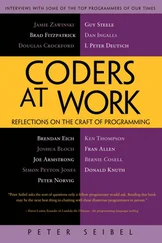Peter Siebel - Practical Common Lisp
Здесь есть возможность читать онлайн «Peter Siebel - Practical Common Lisp» весь текст электронной книги совершенно бесплатно (целиком полную версию без сокращений). В некоторых случаях можно слушать аудио, скачать через торрент в формате fb2 и присутствует краткое содержание. Год выпуска: 2005, ISBN: 2005, Издательство: Apress, Жанр: Программирование, на английском языке. Описание произведения, (предисловие) а так же отзывы посетителей доступны на портале библиотеки ЛибКат.
- Название:Practical Common Lisp
- Автор:
- Издательство:Apress
- Жанр:
- Год:2005
- ISBN:1-59059-239-5
- Рейтинг книги:4 / 5. Голосов: 1
-
Избранное:Добавить в избранное
- Отзывы:
-
Ваша оценка:
- 80
- 1
- 2
- 3
- 4
- 5
Practical Common Lisp: краткое содержание, описание и аннотация
Предлагаем к чтению аннотацию, описание, краткое содержание или предисловие (зависит от того, что написал сам автор книги «Practical Common Lisp»). Если вы не нашли необходимую информацию о книге — напишите в комментариях, мы постараемся отыскать её.
Practical Common Lisp — читать онлайн бесплатно полную книгу (весь текст) целиком
Ниже представлен текст книги, разбитый по страницам. Система сохранения места последней прочитанной страницы, позволяет с удобством читать онлайн бесплатно книгу «Practical Common Lisp», без необходимости каждый раз заново искать на чём Вы остановились. Поставьте закладку, и сможете в любой момент перейти на страницу, на которой закончили чтение.
Интервал:
Закладка:
(let* ((dixie-chicks (matching *mp3s* :artist "Dixie Chicks"))
(same-song (in :song (select :columns :song :from *mp3s* :where dixie-chicks)))
(query #'(lambda (row) (and (not (funcall dixie-chicks row)) (funcall same-song row)))))
(select :columns '(:artist :song) :from *mp3s* :where query))
This obviously isn't quite as convenient. If you were going to write an application that needed to do lots of complex queries, you might want to consider coming up with a more expressive query language.
296
The version of LOOP implemented at M.I.T. before Common Lisp was standardized included a mechanism for extending the LOOP grammar to support iteration over new data structures. Some Common Lisp implementations that inherited their LOOP implementation from that code base may still support that facility, which would make do-rowsand map-rowsless necessary.
297
The version of XMMS shipped with Red Hat 8.0 and 9.0 and Fedora no longer knows how to play MP3s because the folks at Red Hat were worried about the licensing issues related to the MP3 codec. To get an XMMS with MP3 support on these versions of Linux, you can grab the source from http://www.xmms.organd build it yourself. Or, see http://www.fedorafaq.org/#xmms-mp3for information about other possibilities.
298
To further confuse matters, there's a different streaming protocol called Icecast . There seems to be no connection between the ICY header used by Shoutcast and the Icecast protocol.
299
Technically, the implementation in this chapter will also be manipulated from two threads—the AllegroServe thread running the Shoutcast server and the REPL thread. But you can live with the race condition for now. I'll discuss how to use locking to make code thread safe in the next chapter.
300
Another thing you may want to do while working on this code is to evaluate the form (net.aserve::debug-on :notrap). This tells AllegroServe to not trap errors signaled by your code, which will allow you to debug them in the normal Lisp debugger. In SLIME this will pop up a SLIME debugger buffer just like any other error.
301
Shoutcast headers are usually sent in lowercase, so you need to escape the names of the keyword symbols used to identify them to AllegroServe to keep the Lisp reader from converting them to all uppercase. Thus, you'd write :|icy-metaint|rather than :icy-metaint. You could also write :\i\c\y-\m\e\t\a\i\n\t, but that'd be silly.
302
The function turn-off-chunked-transfer-encodingis a bit of a kludge. There's no way to turn off chunked transfer encoding via AllegroServe's official APIs without specifying a content length because any client that advertises itself as an HTTP/1.1 client, which iTunes does, is supposed to understand it. But this does the trick.
303
Most MP3-playing software will display the metadata somewhere in the user interface. However, the XMMS program on Linux by default doesn't. To get XMMS to display Shoutcast metadata, press Ctrl+P to see the Preferences pane. Then in the Audio I/O Plugins tab (the leftmost tab in version 1.2.10), select the MPEG Layer 1/2/3 Player ( libmpg123.so) and hit the Configure button. Then select the Streaming tab on the configuration window, and at the bottom of the tab in the SHOUTCAST/Icecast section, check the "Enable SHOUTCAST/Icecast title streaming" box.
304
Folks coming to Common Lisp from Scheme might wonder why play-currentcan't just call itself recursively. In Scheme that would work fine since Scheme implementations are required by the Scheme specification to support "an unbounded number of active tail calls." Common Lisp implementations are allowed to have this property, but it isn't required by the language standard. Thus, in Common Lisp the idiomatic way to write loops is with a looping construct, not with recursion.
305
This function assumes, as has other code you've written, that your Lisp implementation's internal character encoding is ASCII or a superset of ASCII, so you can use CHAR-CODE to translate Lisp CHARACTER objects to bytes of ASCII data.
306
The intricacies of concurrent programming are beyond the scope of this book. The basic idea is that if you have multiple threads of control—as you will in this application with some threads running the shoutcastfunction and other threads responding to requests from the browser—then you need to make sure only one thread at a time manipulates an object in order to prevent one thread from seeing the object in an inconsistent state while another thread is working on it. In this function, for instance, if two new MP3 clients are connecting at the same time, they'd both try to add an entry to *playlists*and might interfere with each other. The with-process-lockensures that each thread gets exclusive access to the hash table for long enough to do the work it needs to do.
307
This approach also assumes that every client machine has a unique IP address. This assumption should hold as long as all the users are on the same LAN but may not hold if clients are connecting from behind a firewall that does network address translation. Deploying this application outside a LAN will require some modifications, but if you want to deploy this application to the wider Internet, you'd better know enough about networking to figure out an appropriate scheme yourself.
308
Unfortunately, because of licensing issues around the MP3 format, it's not clear that it's legal for me to provide you with such an MP3 without paying licensing fees to Fraunhofer IIS. I got mine as part of the software that came with my Slimp3 from Slim Devices. You can grab it from their Subversion repository via the Web at http://svn.slimdevices.com/*checkout*/trunk/server/HTML/EN/html/silentpacket.mp3?rev=2. Or buy a Squeezebox, the new, wireless version of Slimp3, and you'll get silentpacket.mp3as part of the software that comes with it. Or find an MP3 of John Cage's piece 4'33" .
309
The reader supports a bit of syntax, #., that causes the following s-expression to be evaluated at read time. This is occasionally useful in source code but obviously opens a big security hole when you read untrusted data. However, you can turn off this syntax by setting *READ-EVAL* to NIL , which will cause the reader to signal an error if it encounters #..
310
This solution has its drawbacks—if a browsepage returns a lot of results, a fair bit of data is going back and forth under the covers. Also, the database queries aren't necessarily the most efficient. But it does keep the application stateless. An alternative approach is to squirrel away, on the server side, information about the results returned by browseand then, when a request to add songs come in, find the appropriate bit of information in order to re-create the correct set of songs. For instance, you could just save the values list instead of sending it back in the form. Or you could copy the RANDOM-STATE object before you generate the browse results so you can later re-create the same "random" results. But this approach causes its own problems. For instance, you'd then need to worry about when you can get rid of the squirreled-away information; you never know when the user might hit the Back button on their browser to return to an old browse page and then hit the "Add all" button. Welcome to the wonderful world of Web programming.
Интервал:
Закладка:
Похожие книги на «Practical Common Lisp»
Представляем Вашему вниманию похожие книги на «Practical Common Lisp» списком для выбора. Мы отобрали схожую по названию и смыслу литературу в надежде предоставить читателям больше вариантов отыскать новые, интересные, ещё непрочитанные произведения.
Обсуждение, отзывы о книге «Practical Common Lisp» и просто собственные мнения читателей. Оставьте ваши комментарии, напишите, что Вы думаете о произведении, его смысле или главных героях. Укажите что конкретно понравилось, а что нет, и почему Вы так считаете.








